Rare 17th Century William and Mary 10-Inch Ebonised Longcase/Grandfather Clock
Sold
Request Information
Follow Us
Rare 17th Century William and Mary 10 Inch Ebonised Longcase/Grandfather Clock
A rare, early English eight-day longcase clock signed on the chapter ring Aynsworth London, dating to the period c.1690-1700.
The elegantly proportioned ebonised case, formerly with rising square hood now sliding, is framed with convex mouldings and barley-twist columns. The trunk with mouldings to the door, lenticle and original hinges has a box base raised on bun feet.
The fine 10-inch square brass dial with a matted centre has an applied silvered chapter ring, subsidiary seconds dial under the XII, circular date aperture above the VI and fine unusual brass spandrels. The chapter ring is engraved with a narrow outer minute track within which are Arabic five-minute numerals, a central ring of Roman hours I-XII, lozenge-shaped half-hour markers and quarter divisions on the inside. There are three large letters in the matted centre: I W E. I and E are possible the initial letters of the names of a couple, whilst W might refer to a wedding, making the clock a wedding present. The time is indicated by a fine pair of period blued steel hands. The chapter ring is signed along the bottom edge Aynsworth London.
The weight-driven eight-day brass movement consists of going and striking trains. The going train has anchor escapement with a seconds pendulum, whilst the striking is regulated by an external count-wheel mounted on the backplate and indicates the hours fully on a bell. The pendulum has a brass-faced lead bob and the movement has contemporary brass-cased lead weights.
The maker
John Aynsworth was active as a clockmaker in the period 1680 to about 1710. Presumably, he lived with his wife Mary in the Parish of St Michael Cornhill, where he appears to have been a draper. Britten makes mention of a J. Aynsworth based in Westminster in the years 1645-1680, who was a lantern clock maker. Several longcase clocks, as well as lantern clocks by his hand are known.
Condition
Good. Wear consistent with age and use.
Dimensions
Height: 75.6 in. (192 cm)
Width: 16.93 in. (43 cm)
Depth: 9.06 in. (23 cm)
Literature
B. Loomes, The Clockmakers of Great Britain 1286-1700, Ashbourne 2014, p. 23
Britten’s Old Clock & Watches, ed. C. Clutton, G.H Britten & C.A. Ilbert, 9th edition, Chichester, 1982, p. 357.
PREVIOUSLY SOLD
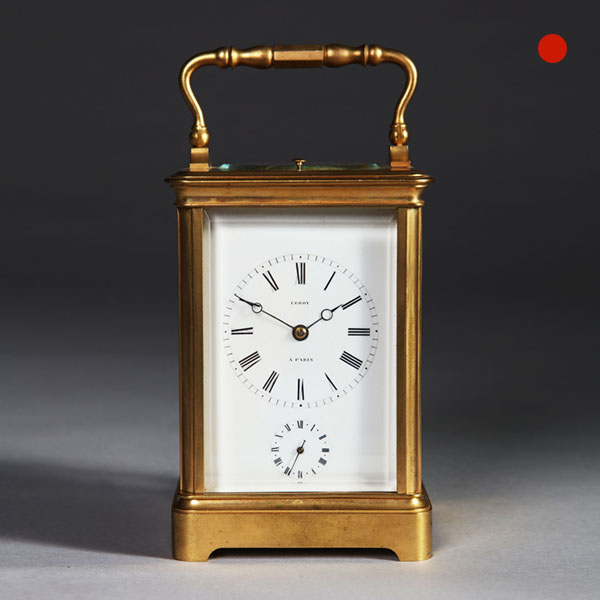
19th-Century Quarter-striking Carriage Clock by Leroy, Paris
The gilt-brass, so-called corniche case has bevelled glass panels on all sides so that the movement is entirely visible. It is surmounted by a shaped carrying handle. The white enamel dial has a Roman chapter ring, with Arabic five-minute and minute divisions.
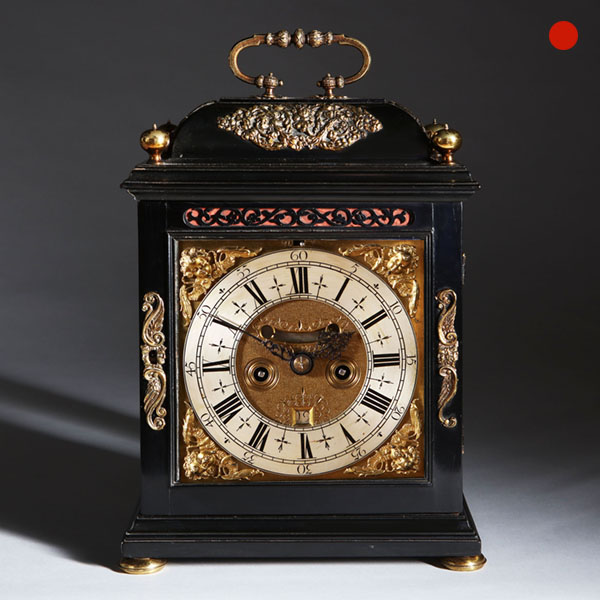
William and Mary Ebony Veneered Bracket Clock by Johnathan Lowndes
The ebony-veneered case has a so-called domed top, a design which became popular in the Charles II period (from 1675 onwards). The case is adorned with repousse brass ornaments and rests on gilt-brass bun feet. It is surmounted by a brass carrying handle of typical shape.
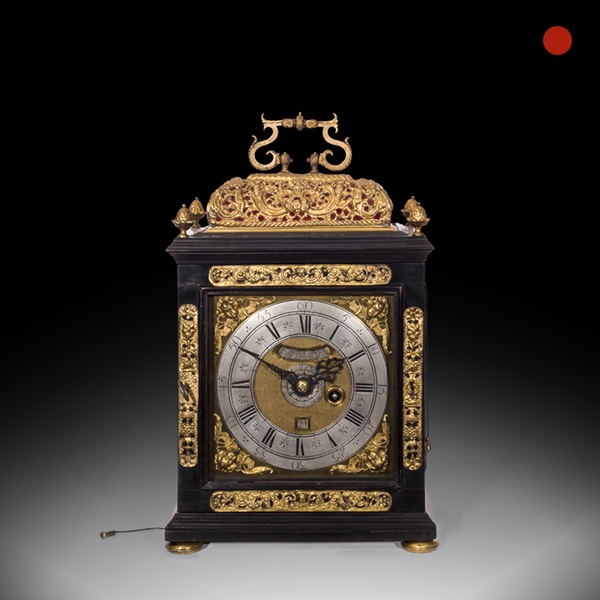
17th-Century Ebony Veneered Table Clock with Alarm and Pull Quarter Repeat
A magnificent sprung driven table clock by respected London maker George Etherington. The late 17th century, ebony- veneered table clock with alarm and pull quarter repeat on two bells, signed on the chapter ring Etherington London, and on the backplate Geo Etherington LONDON, c. 1695-1700.
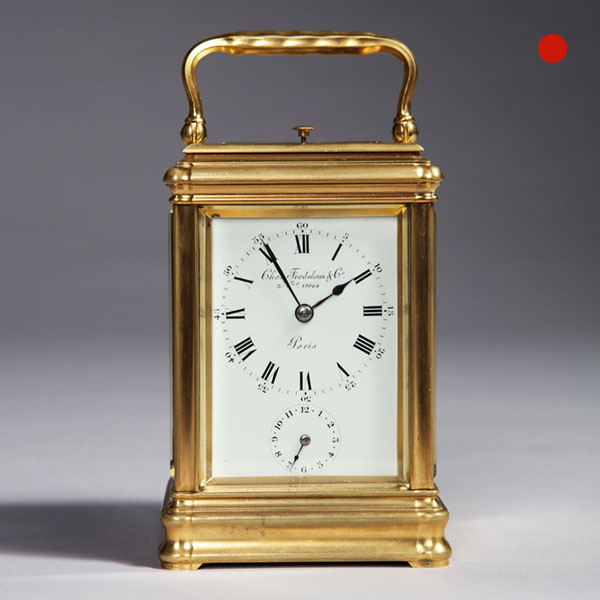
19th-Century Carriage Clock signed Charles Frodsham, London
The so-called gorge case has its original gilding. It has bevelled glass panels on all sides so that the movement is entirely visible and is surmounted by a shaped carrying handle. The white enamel dial has a Roman chapter ring, with Arabic five-minute and minute divisions.

19th-Century Quarter-striking Carriage Clock by Leroy, Paris
The gilt-brass, so-called corniche case has bevelled glass panels on all sides so that the movement is entirely visible. It is surmounted by a shaped carrying handle. The white enamel dial has a Roman chapter ring, with Arabic five-minute and minute divisions.

William and Mary Ebony Veneered Bracket Clock by Johnathan Lowndes
The ebony-veneered case has a so-called domed top, a design which became popular in the Charles II period (from 1675 onwards). The case is adorned with repousse brass ornaments and rests on gilt-brass bun feet. It is surmounted by a brass carrying handle of typical shape.

17th-Century Ebony Veneered Table Clock with Alarm and Pull Quarter Repeat
A magnificent sprung driven table clock by respected London maker George Etherington. The late 17th century, ebony- veneered table clock with alarm and pull quarter repeat on two bells, signed on the chapter ring Etherington London, and on the backplate Geo Etherington LONDON, c. 1695-1700.

19th-Century Carriage Clock signed Charles Frodsham, London
The so-called gorge case has its original gilding. It has bevelled glass panels on all sides so that the movement is entirely visible and is surmounted by a shaped carrying handle. The white enamel dial has a Roman chapter ring, with Arabic five-minute and minute divisions.
YOU MAY ALSO LIKE
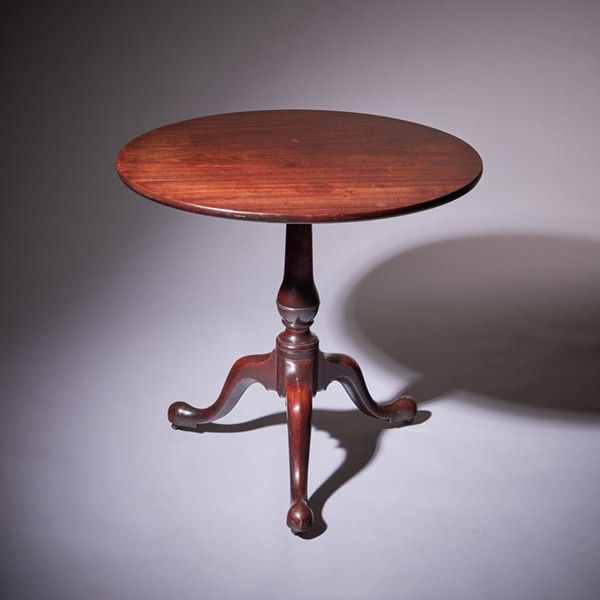
18th Century George III Mahogany Tripod Table, Circa 1770
18th Century George III Mahogany Tripod Table, Circa 1770 £2,200Follow Us18th Century George III...
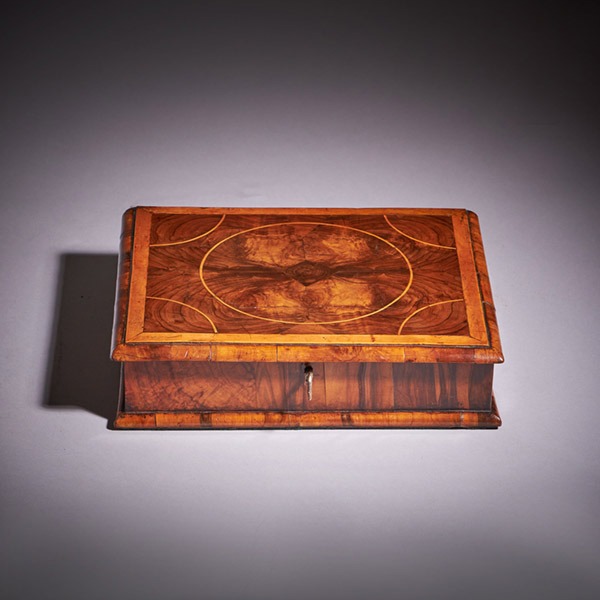
Fine William and Mary 17th Century Olive Oyster Lace Box
Fine William and Mary 17th Century Olive Oyster Lace Box £2,600Follow UsFine William and Mary 17th...
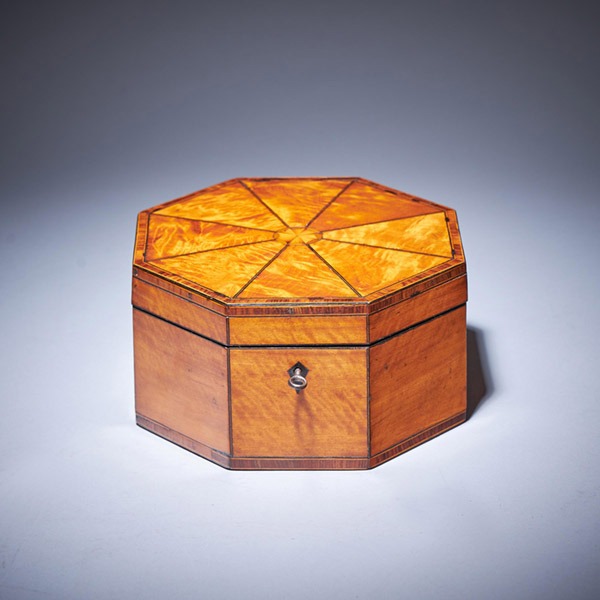
A Fine and Rare George III Octagonal Figured Satinwood Box, C.1790
A Fine and Rare George III Octagonal Figured Satinwood Box, C.1790 £2,200Follow UsA Fine and Rare...
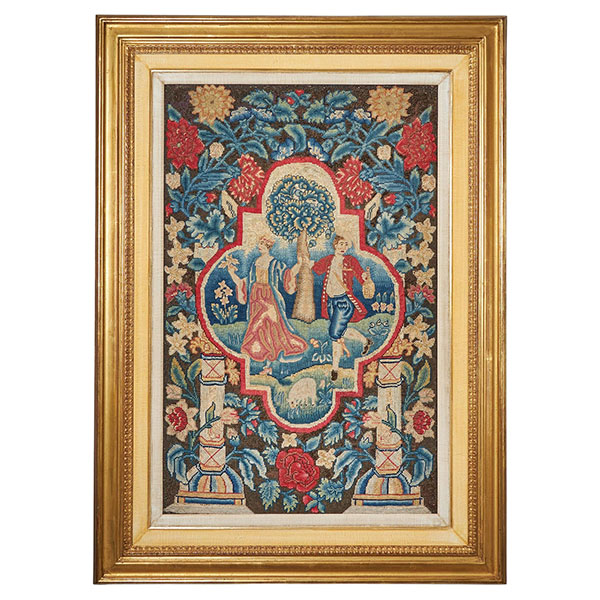
A Rare and Vibrant Framed 18th Century George II Needlework Picture, Circa 1730
A Rare and Vibrant Framed 18th Century George II Needlework Picture, Circa 1730 £16,000Follow UsA Rare and Vibrant Framed 18th Century George II Needlework Picture, Circa 1730 A rare and vibrant early 18th century George II pictorial...
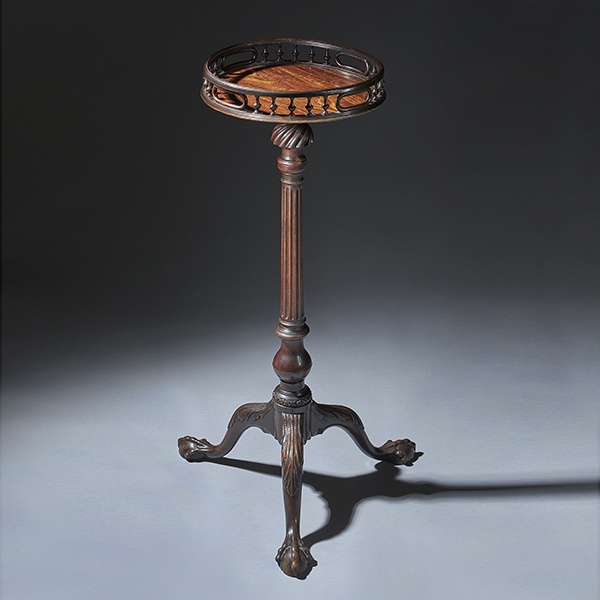
A Fine George II 18Th Century Chippendale Period Carved Mahogany Torchiere. Circa 1755-1765, England
A FINE GEORGE II 18TH CENTURY CHIPPENDALE PERIOD CARVED MAHOGANY TORCHIERE Circa 1755-1765, England £25,000Follow UsA FINE GEORGE II 18TH CENTURY CHIPPENDALE PERIOD CARVED MAHOGANY TORCHIERE, Circa 1755-1765, England An exquisitely fine and...
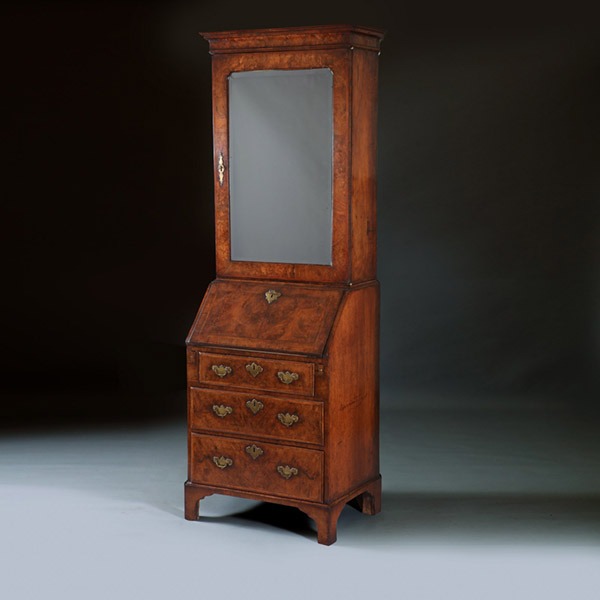
A Fine Early 18th Century George I Burr Walnut Bureau Bookcase, Circa 1715
A Fine Early 18th Century George I Burr Walnut Bureau Bookcase, Circa 1715 £11,500Follow UsA Fine...

18th Century George III Mahogany Tripod Table, Circa 1770
18th Century George III Mahogany Tripod Table, Circa 1770 £2,200Follow Us18th Century George III...

Fine William and Mary 17th Century Olive Oyster Lace Box
Fine William and Mary 17th Century Olive Oyster Lace Box £2,600Follow UsFine William and Mary 17th...

A Fine and Rare George III Octagonal Figured Satinwood Box, C.1790
A Fine and Rare George III Octagonal Figured Satinwood Box, C.1790 £2,200Follow UsA Fine and Rare...

A Rare and Vibrant Framed 18th Century George II Needlework Picture, Circa 1730
A Rare and Vibrant Framed 18th Century George II Needlework Picture, Circa 1730 £16,000Follow UsA Rare and Vibrant Framed 18th Century George II Needlework Picture, Circa 1730 A rare and vibrant early 18th century George II pictorial...

A Fine George II 18Th Century Chippendale Period Carved Mahogany Torchiere. Circa 1755-1765, England
A FINE GEORGE II 18TH CENTURY CHIPPENDALE PERIOD CARVED MAHOGANY TORCHIERE Circa 1755-1765, England £25,000Follow UsA FINE GEORGE II 18TH CENTURY CHIPPENDALE PERIOD CARVED MAHOGANY TORCHIERE, Circa 1755-1765, England An exquisitely fine and...

A Fine Early 18th Century George I Burr Walnut Bureau Bookcase, Circa 1715
A Fine Early 18th Century George I Burr Walnut Bureau Bookcase, Circa 1715 £11,500Follow UsA Fine...








